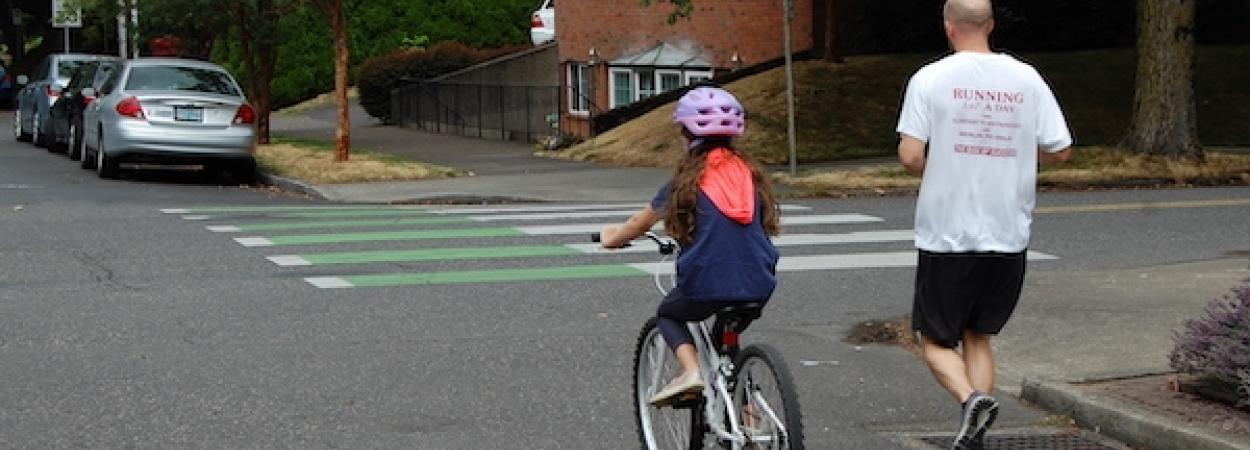An increasing trend in the number of bicycle crashes in the U.S since 2009 has been a major challenge to safety. A new PSU masters thesis in civil engineering offers insights: "Improving Bicycle Crossings at Unsignalized Intersections through Pavement Markings: Analysis of the City of Portland Innovative Strategy" by Frank Boateng Appiah of Portland State University.
For a deeper dive into this research, read BikePortland's coverage of the study. For more on the researcher, read our 2020 interview with Frank.
The City of Portland, Oregon has experimented with an innovative treatment to improve bicycle crossings at unsignalized intersections. This treatment, termed a high visibility cross-bike, was installed at crossings of neighborhood bicycle greenways with busy roadways. The marking is similar to a zebra-striped pedestrian crosswalk but with green pavement markings rather than white. Although the cross-bike marking does not currently require motorists to yield for bicycles waiting to cross the roadway, it was hypothesized that the presence of the marking would alter motorists' yielding behavior towards bicyclists and improve the crossing experience for persons on bicycles.
In his thesis, Appiah analyzed empirical data to evaluate the modifications in the rate of motorists' yielding behavior at three unsignalized intersections in Portland, Oregon. The intersections (NE Going and NE 15th Ave, SE Salmon and SE 20th Ave, NE Holman and NE 33rd) were evaluated before and after the new markings were installed.
Video data revealed changes in the rate of motorists yielding to bicyclists. Notably, the analysis found that the installation of the cross-bike improved driver yielding behavior for cyclists. This change in driver yielding was statistically significant. Driver yielding rates at NE Going & NE 15th Ave were found to be 48% near side and 61% far side before the crossing was marked. These yielding rates improved to 91% near side and 95% far side after the installation of the treatment. This statistically significant difference in yielding behavior of motorists is expected to translate into improved bicycle safety.
In addition to increasing motorists' yielding rates, the cross-bike markings also reduced average wait times for persons on bicycles, and provided positive guidance for bicyclists to select a more visible crossing location. It can be expected that the number of people using the bicycle network will increase if the safety and efficiency of the crossings are improved. Excessive delays at busy crossings put off many interested but concerned cyclists.
Photo by Cait McCusker
The Transportation Research and Education Center (TREC) at Portland State University is home to the National Institute for Transportation and Communities (NITC), the Initiative for Bicycle and Pedestrian Innovation (IBPI), and other transportation programs. TREC produces research and tools for transportation decision makers, develops K-12 curriculum to expand the diversity and capacity of the workforce, and engages students and professionals through education.




